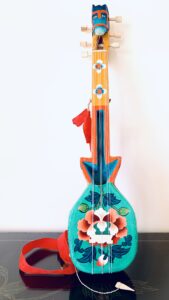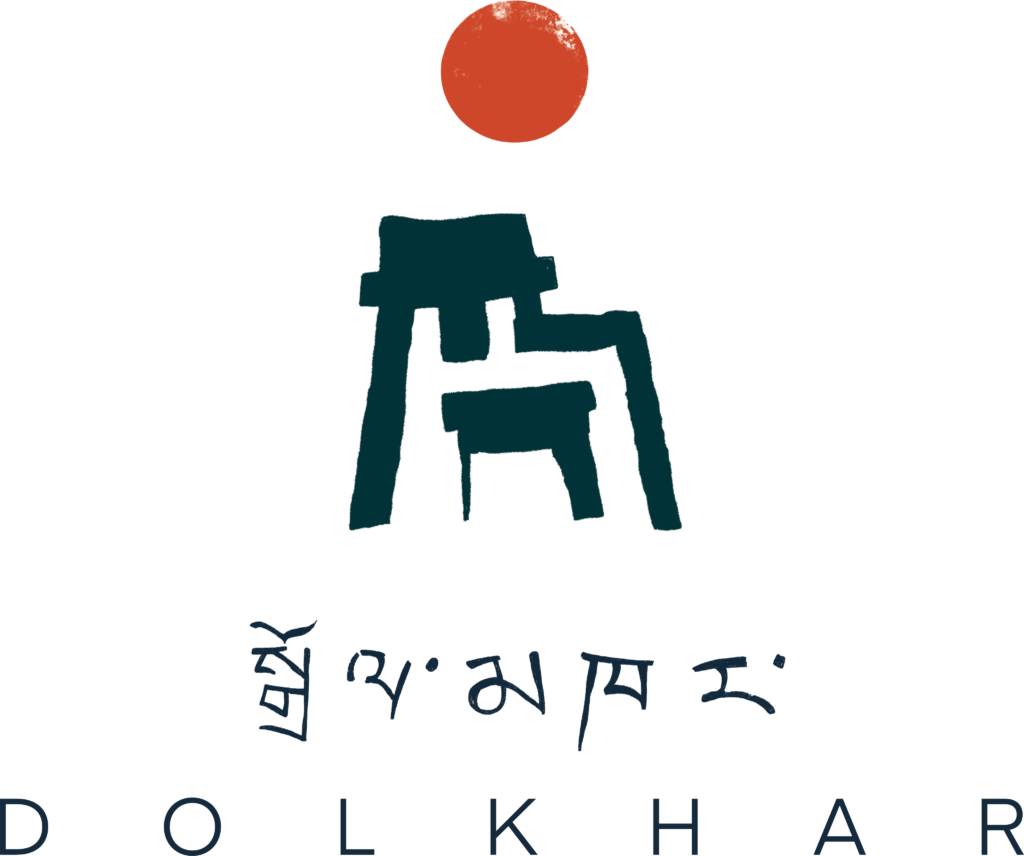I first came across the “dranyen” while documenting craft in Ladakh, and I remember being completely awestruck by the instrument—its bright colors, the horse-shaped head, and the skill with which Tsering Angchuk le was playing this fretless six-string instrument.
The dranyen, or kopong as we call it in Ladakh, is an instrument with strings paired in three groups. Surprisingly, according to Tibetan music classification, the dranyen falls under the percussion family; however, it is categorized as a string instrument in Western music. The dranyen, according to many, is the most important instrument of the Tibetan region. Although its origin is widely disputed and the only source of its evolution comes from oral tradition passed along by Tibetan aristocrats and members of the Lhasa Nangma Association, it can be established that the instrument was born exclusively on the Tibetan plateau. Even though the “dra-nyen,” translating directly to tune and melody respectively, was invented in the Tibetan region, it is said to have been inspired by the Indian sarod, which in turn was inspired by the Afghan rhubab. The dranyen dates back a millennium to the 7th century, and in the late medieval era (~17th century), it became known as the Ngari dranyen due to its apparent origin in the Ngari region of Western Tibet.
The instrument is said to have become wildly popular in the region during the reign of King Songsten Gampo, and evidence of the instrument’s existence and popularity features in 8th-century murals of Samye Monastery and the 1300-year-old Potala Palace. Interestingly, it is said that when Songsten Gampo prescribed “The Ten Divine Principles of Virtues” and “The Sixteen Human Principles of Moral Conduct,” the entertainment at the event was provided by local minstrels who were accompanied by the dranyen. This event also plays a particularly important role, as it was during the announcement of this decree that the Tibetan written script by Thonmi Sambhota (a script also shared by Ladakh) was promulgated (646 AD).
Curiously, the instrument was produced primarily in Southern Tibet’s sub-tropical “Kongpo” region because of the availability of wood, and one cannot help but speculate on whether it is from here that the dranyen migrated to Ladakh since in Ladakhi it is called the “kopong.” Or maybe it is merely a coincidence—a curious case of a similar name.
The instrument from that time in Tibet has grown and has been adapted in many forms, not only in its physicality but also in the way it is played and thus, heard. The dranyen has also been instrumental in passing narratives through folk and traditional music. It is also said to have a role in accompanying songs set in satire during the Tibetan invasions and cultural revolutions.

At this point, I cannot help but explicitly state the massive influence Tibet has had on Ladakh. Yes, Ladakh has also been influenced by other distinctly different cultures, but a large part of Ladakh, especially the southeastern Changthang area, has little to no difference from parts of Tibet. People of Ladakh, being part of India, have been educated to understand the implications of the partition and to, of course, empathize with the impact it had on the people. However, literature taught in schools in this region pays no heed to the Chinese invasion of Tibet and its effect on the people of Tibet and Ladakh—people whose lives have been so historically intertwined.
It is astonishing, the simple ignorance and alienation we feel from people so culturally similar and how the agenda of nationalism and selective narratives have created boundaries between people you couldn’t possibly tell apart just a few decades ago. I guess it is important, therefore, to question identity and understand context, especially now that the idea of land rights and cultural revolutions seem so frighteningly relevant to Ladakh. It is with this idea of establishing and rediscovering the identity of Ladakh in mind that the importance of spaces like Dolkhar becomes so abundantly clear. As an extension of this journey, Dolkhar has released its serene theme track revolving around the beautiful dranyen. Created in hopes of reintroducing diminishing elements of Ladakh’s cultural identity.
We hope you enjoy listening to this track as much as we enjoyed the process of its creation.
Reference: Dranyen: A Study in Tibetan History by Tashi Tenzin.



